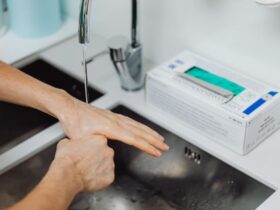Understanding the relationship between cubic feet and gallons is essential when measuring water volume accurately. Whether you’re estimating the capacity of a water tank, calculating water usage for residential or industrial purposes, or simply trying to be mindful of water conservation, knowing how many gallons of water are contained in a cubic foot is crucial. In this article, we will delve into the concept of cubic feet and gallons, explore the conversion factors involved, and provide practical examples and tools to facilitate easy and precise volume calculations. By the end of this read, you’ll be equipped with the knowledge to make informed decisions regarding water management and usage, contributing to a more sustainable future.
How Many Gallons Of Water In A Cubic Foot?
In one cubic foot, there are approximately 7.48 gallons of water. Understanding this conversion is essential for various practical applications, from calculating the water capacity of household containers like water tanks and pools to estimating water usage for agricultural or industrial purposes. The conversion factor between cubic feet and gallons provides a simple and convenient way to measure water volume accurately. So, the next time you need to determine the amount of water in a given space, you can easily do so by considering that one cubic foot equals approximately 7.48 gallons.
Importance Of Understanding Water Volume Measurements
Understanding water volume measurements is of paramount importance for several significant reasons:
Efficient Water Management: Knowing water volume measurements allows individuals, households, and industries to manage their water resources efficiently. By accurately measuring water usage and consumption, it becomes easier to identify areas where water can be conserved, and wastage can be minimized, leading to reduced water bills and environmental benefits.
Water Conservation: With increasing concerns over water scarcity and environmental sustainability, understanding water volume measurements becomes crucial in promoting responsible water usage. When individuals are aware of the amount of water they are using, they are more likely to adopt water-saving practices and contribute to overall conservation efforts.
Infrastructure Planning: For engineers, architects, and urban planners, accurate water volume measurements are vital for designing water-related infrastructure. Whether designing water supply systems, stormwater management, or sewage treatment facilities, precise water volume calculations are fundamental to ensuring the infrastructure meets the actual demand.
Agricultural Efficiency: In agriculture, where water is a critical resource for crop irrigation, understanding water volume measurements helps farmers optimize their irrigation practices. Proper irrigation based on precise water measurements ensures that crops receive the right amount of water, leading to improved crop yield and reduced water wastage.
Disaster Preparedness: During floods or natural disasters, knowing the volume of water in a specific area is essential for disaster management and emergency response teams. Accurate water volume measurements help in predicting flood levels and planning evacuations, minimizing potential loss of life and property.
Industrial Applications: In various industries, such as manufacturing and mining, water is often a crucial component of processes. Understanding water volume measurements enables industries to monitor and control water usage, ensuring they meet regulatory requirements and reduce environmental impact.
Public Health Concerns: In situations where water contamination or pollution occurs, understanding water volume measurements helps in estimating the extent of the problem and determining appropriate remediation measures. This is vital for safeguarding public health and ensuring access to clean and safe drinking water.
The Relationship Between Cubic Feet And Gallons
The relationship between cubic feet and gallons lies in their unit of measurement for volume, which involves a straightforward conversion factor. Understanding this relationship is essential for various practical applications, especially when dealing with water quantity and capacity in everyday life, construction, engineering, and many other fields. Let’s delve into the details of this relationship:
Cubic Feet (ft³):
A cubic foot is a unit of volume used to measure three-dimensional space. It represents a cube that is one foot on each side. The symbol for cubic feet is “ft³.” Cubic feet is commonly used in the United States and other countries that follow the imperial system for measurements.
Gallons (gal):
Gallon is another unit of volume used primarily to measure the quantity of liquid substances. The symbol for gallons is “gal.” The gallon has several variations, such as the U.S. liquid gallon, the U.S. dry gallon, and the imperial gallon (used in the UK and other countries). In this context, we will focus on the U.S. liquid gallon.
The Conversion Factor:
The relationship between cubic feet and gallons is based on a straightforward conversion factor: One U.S. liquid gallon is approximately equal to 0.13368 cubic feet. Alternatively, one cubic foot is approximately equal to 7.48 U.S. liquid gallons.
The Formula:
To convert cubic feet to gallons, you can use the following formula:
Volume in gallons = Volume in cubic feet × 7.48
For example, if you have a container with a volume of 3 cubic feet, you can calculate the equivalent volume in gallons as follows:
Volume in gallons = 3 ft³ × 7.48 = 22.44 gallons
Practical Applications:
Understanding the relationship between cubic feet and gallons has numerous practical applications:
- It is commonly used to determine the capacity of water tanks, swimming pools, water heaters, and other containers that hold liquids.
- It helps estimate water usage in households, businesses, and industries. Water utilities use this conversion to measure and bill water consumption accurately.
- Engineers and architects use cubic feet to gallons conversion for designing and constructing water-related infrastructure, such as water supply systems and reservoirs.
- Farmers use this conversion to calculate water requirements for irrigation, ensuring optimal crop usage.
- Aquariums and Ponds: Hobbyists use the conversion to determine the appropriate volume of water for their aquariums and ponds, aiding in proper fish and plant care.
- In logistics, understanding volume measurements is essential for transporting liquids efficiently, such as tanker trucks or cargo ships.
Tips For Ensuring Accurate Measurements
- Invest in high-quality measuring instruments that adhere to recognized standards. Calibration and certification of instruments are essential to ensure accuracy. Regularly check and calibrate your instruments to maintain their precision.
- Pay close attention when reading measurements from instruments with scales, such as rulers, thermometers, and gauges. Ensure you align your eyes correctly with the scale and read at eye level to avoid parallax errors.
- When measuring the volume or level of liquids in containers with markings, ensure that the markings are at eye level to prevent parallax errors caused by viewing from an angle.
- Be mindful of external factors affecting measurements, such as temperature, humidity, and air pressure. When possible, conduct measurements in controlled environments.
- Specific instruments, like analog scales or voltmeters, may have zero error. Before taking measurements, check if the instrument reading is zero when not in use, and adjust accordingly.
- Take multiple readings and calculate the average to reduce the impact of random errors. Consistent patterns in multiple measurements increase confidence in the accuracy of the results.
Conversion Tools And Techniques
There are numerous websites dedicated to unit conversion. Users can input the value they want to convert and select the desired units for instant results. These websites often cover various units, making them useful for various conversions.
Many mobile apps are available for unit conversion on smartphones and tablets. These apps are user-friendly and often provide offline access to conversion tables, making them handy for on-the-go use.
Many modern calculators, whether physical or digital, come with a unit conversion feature. Users can switch between units by entering the value and selecting the desired units.
Spreadsheet software like Microsoft Excel and Google Sheets allows users to create custom conversion tables or use built-in functions for automatic unit conversions.
Dimensional analysis is a mathematical technique to convert between units using conversion factors. It involves multiplying the given value by the appropriate conversion factor to get the desired unit.
Printed or digital conversion tables provide a quick reference for common conversions. These tables display the equivalent values between different units for easy lookup.
Final Thoughts
Understanding the relationship between units of measurement and employing accurate conversion tools and techniques are indispensable skills in a world where precision matters. Whether in scientific research, engineering projects, daily life, or global trade, accurate measurements are fundamental in achieving reliable data, ensuring safety, and making informed decisions. By grasping the concept of cubic feet to gallons conversion, we gain valuable insights into water volume measurements, which have numerous applications in water management, environmental conservation, agriculture, construction, and more. The ability to convert between different units enables us to work seamlessly with diverse measurement systems and facilitates collaboration across international boundaries.
FAQ’s
How can I convert cubic feet to gallons?
To convert cubic feet to gallons, you can use the formula: Volume in gallons = Volume in cubic feet × 7.48. For example, if you have a container with a volume of 3 cubic feet, the equivalent volume in gallons would be 3 ft³ × 7.48 = 22.44 gallons.
Are there tools available for unit conversion?
Yes, there are various tools available for unit conversion. Online conversion websites, mobile apps, calculator apps, and spreadsheet software are common tools that offer easy and quick unit conversions. Additionally, plugins for specific software applications and custom scripts are available for more specialized needs.
How can I ensure accurate measurements?
To ensure accurate measurements, use standardized instruments, read scales correctly, minimize parallax errors, eliminate environmental interference, record multiple measurements, and understand and correct systematic errors. Keep instruments well-maintained, use proper units, and avoid estimations whenever possible.




















Leave a Reply